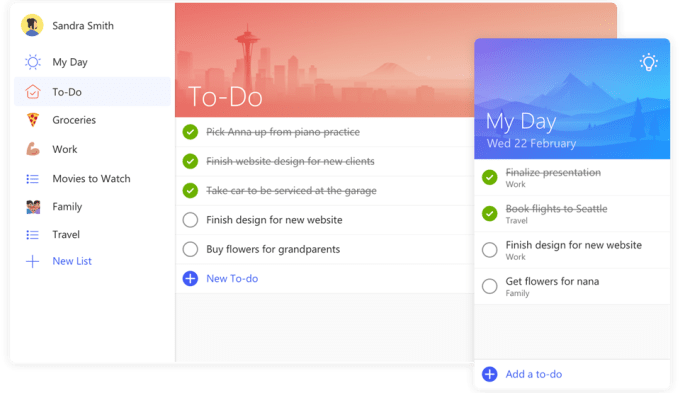
Microsoft acquired the popular mobile to do list application Wunderlist back in 2015, and now it’s preparing users for its eventual demise with the release of its new application “To-Do,” announced today. The new app was built by the team behind Wunderlist, and will bring in the favorite elements of that app in the months ahead, Microsoft says. The company also added that it won’t shut down Wunderlist until it’s confident that it has “incorporated the best of Wunderlist into To-Do.”
In case you’re hoping Wunderlist will get some sort of reprieve, Microsoft makes its forthcoming demise pretty clear. Stating its plans in black-and-white: “we will retire Wunderlist,” it says in a blog post.
In the meantime, Microsoft is encouraging Wunderlist users to make the switch by offering an importer that will bring in your lists and to-dos from Wunderlist into To-Do, where those items will now be available in other Microsoft products, like Exchange and Outlook.

Microsoft’s plans for To-Do were previously leaked, when the company was found to be testing a new app, then under the codename Project Cheshire.
At the time of the leaks, that was a fairly bare bones to-do app that let users create lists, add items, set reminders, and sync lists across platforms. The only interesting feature was that it was able to offer suggestions of tasks to add to a list – something that has now transformed into To-Do’s “Intelligent Suggestions” feature.
According to Microsoft’s announcement, To-Do starts you off in a screen called “My Day” which offers a list of items that need to get done today. You can customize this list further by accessing the “Intelligent Suggestions” feature – available with a tap on the lightbulb icon – which will offer suggestions of things you may want to add to your list.
Read More
Comments
Post a Comment